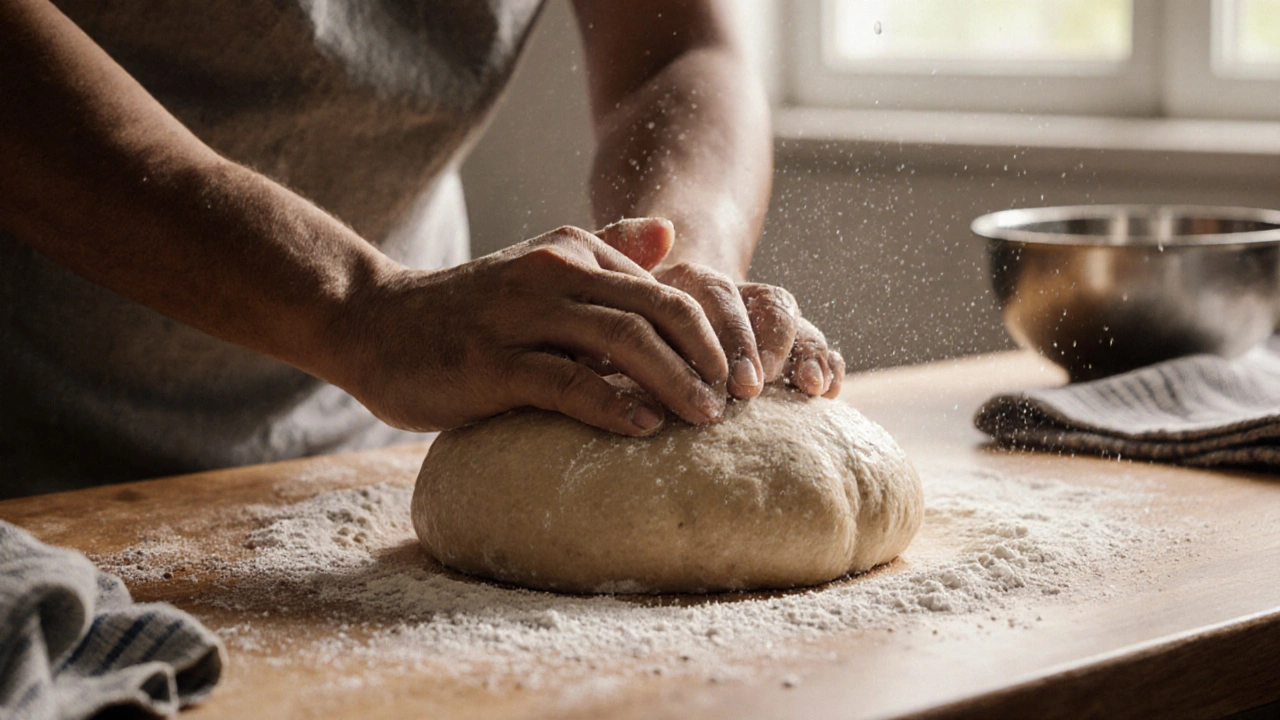Roti Dough: Simple Steps for Soft, Fluffy Rotis
If you’ve ever struggled with hard or crumbly rotis, the secret is the dough. A good roti starts with the right flour, the right amount of water, and a little patience. In this guide we’ll break down everything you need to know so you can roll out soft, puff‑ready rotis without guessing.
Choosing the Right Flour
Most people reach for whole‑wheat atta because it’s what you find in Indian grocery stores. That’s a solid choice, but not all atta is alike. Look for flour that feels fine and powdery, not gritty. If you can, pick a brand that mentions “stone‑ground” – it retains more natural oils and gives a tender bite.
Some cooks blend a little plain all‑purpose flour with atta to make the dough easier to work with. A 90% atta / 10% AP mix gives a softer texture without losing the nutty flavor. Keep the blend consistent so you always know how the dough behaves.
Step‑by‑Step Dough Preparation
1. Measure your flour. For a standard batch, use 2 cups of flour. That will make about 8‑10 rotis.
2. Add salt. A pinch (about ½ tsp) enhances flavor and helps the gluten develop.
3. Warm water is key. Use water that’s just warm to the touch – about 40 °C (105 °F). Warm water activates the gluten faster and makes the dough smoother.
4. Mix slowly. Add water a little at a time while stirring with your hand or a spoon. You’ll notice the flour absorbing the water and forming clumps.
5. Knead. Turn the mixture onto a clean surface and knead for 5‑7 minutes. The dough should become soft, pliable, and not stick to your hands. If it feels too sticky, sprinkle a tiny bit more flour; if it’s dry, add a splash of water.
6. Rest the dough. Cover it with a damp cloth and let it sit for at least 15‑20 minutes. Resting relaxes the gluten, making the dough easier to roll out and the rotis puffier.
7. Divide and shape. Pinch off golf‑ball‑size portions, roll them into smooth balls, and flatten slightly with your palm.
8. Roll out. Lightly dust the surface and rolling pin. Roll each ball into a thin circle, about 6‑7 inches in diameter. Try to keep the thickness even – too thick and the roti won’t puff; too thin and it can tear.
9. Cook. Heat a dry tava or skillet over medium‑high heat. Place the roti on the hot surface; you’ll hear a soft sizzle. When tiny bubbles appear, flip it. After a few seconds, press gently with a cloth or spatula – the roti should puff up. Flip once more for a golden brown spot on each side.
10. Store. Stack cooked rotis in a clean kitchen towel and cover. The steam keeps them soft for the next meal. If you need to keep them longer, let them cool completely, then store in a zip‑lock bag in the fridge for up to 3 days. Reheat on a skillet before serving.
A few extra tips: adding a teaspoon of oil or ghee to the dough makes the rotis richer and easier to roll. If you live in a dry climate, a splash more water during kneading helps. And don’t rush the resting step – it’s the difference between a tough roti and a soft one.
Now you have a clear roadmap for making perfect roti dough every time. Grab your flour, warm some water, and give these steps a try. Your kitchen will smell like a South Indian breakfast, and you’ll have soft, fluffy rotis ready for any curry or dal.
Why Are My Rotis Not Soft? 7 Common Mistakes and How to Fix Them
Soft rotis aren't magic-they're the result of the right dough, proper resting, and correct cooking. Learn the 7 common mistakes that make rotis hard and how to fix them for perfect, fluffy rotis every time.
The Perfect Timing for Adding Oil to Roti Dough
Adding oil to roti dough at the right time can make a significant difference in texture and flavor. Whether you're aiming for soft, fluffy rotis or something with a bit more bite, understanding the role of oil is key. This article explores the best practices for incorporating oil into your roti dough, offering valuable tips and interesting facts to elevate your cooking skills. We'll delve into the science behind how oil affects dough elasticity and moisture retention to help achieve perfect results.

